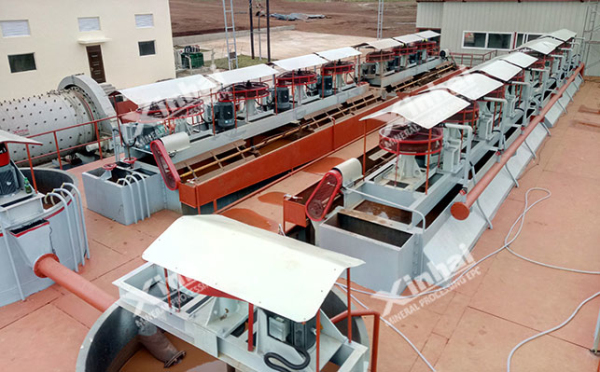Gold flotation includes flotation of natural gold and flotation of gold-bearing ores. Gold-bearing ores can be processed by flotation in the following cases:
1. Gold is mainly combined with sulfide;
2. Although most of the gold is not combined with sulfide, the latter can ensure the formation of a stable foam layer;
3. The ore does not contain sulfide, but contains a large amount of iron oxide (such as iron cap), at this time, the ochre mud can play a role in stabilizing the foam;

4. The ore does not contain sulfide or iron oxide, but contains minerals (such as sericite) that can enter and stabilize the foam;
5. Pure quartz gold ore and sulfide ore are premixed in a certain proportion, or select appropriate agents to form stable foam;
6. After the main metals (copper, lead, zinc, etc.) in the ore are recovered by flotation, the tailings are treated by cyanidation;
7. The flotation of placer gold is only applicable to the placer gold flotation from the products obtained by washing or other abundant products.
In most cases, using flotation to treat gold-bearing ores with high sulfide minerals can maximize gold enrichment into sulfide concentrates, and discard a large amount of tailings, thereby reducing smelting costs; Effective separation of gold and various non-ferrous metal concentrates is beneficial to the comprehensive utilization of precious mineral resources; the treatment requires combined processes including flotation.
In most cases, using flotation to treat gold-bearing ores with high sulfide minerals can maximize gold enrichment into sulfide concentrates, and discard a large amount of tailings, thereby reducing smelting costs; Effective separation of gold and various non-ferrous metal concentrates is beneficial to the comprehensive utilization of precious mineral resources; the treatment requires combined processes including flotation.
If you want to know more about the process of gold mine flotation process, please refer to the article:Detailed process flow of gold ore flotation.